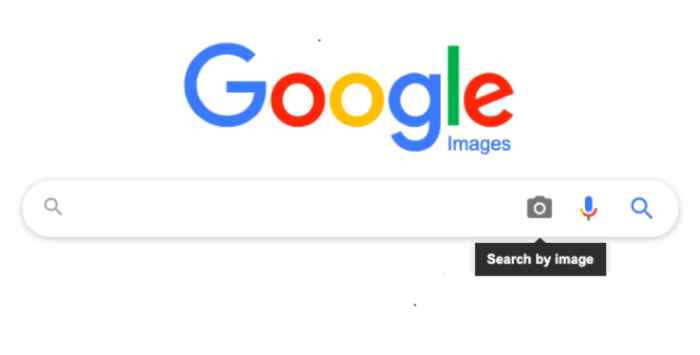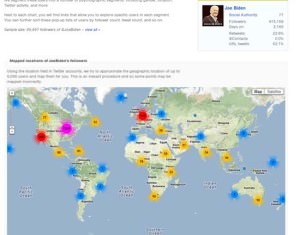Reverse Image Search Tools – 4 Popular Search by Image Tools

The whole world would be in agreement with the fact that digitalization has changed our lives for the better. With the advent of digital media, performing even the most mundane, everyday tasks has become quite easy and simple.
Gone are the days when people had to look up pictures on a magazine or make a laborious trip to the local library to search for answers. The internet era has transformed the way we gather information, for even the tiniest query can now be solved at the click of a mouse or a touch of the screen.
The biggest impact of internet searching is seen in the way we use images to search for relevant information. Taking and using pictures from the internet has become easier than before, all thanks to the “right-click + save as” option.
But if you want to avoid the common problems with internet images, such as duplicate images, copyright infringement of images, or discrepancies in image quality, then reverse image search is the best solution for you.
In this article, we will briefly discuss reverse image search and its various functionalities, coupled with a guide on how to use this technique and the best tools to use for the job.
What Is A Reverse Image Search?
(Source: thedigitalwise.com)
As is evident from the name itself, reverse image search is the process of checking the details surrounding a particular image. You can find out where a certain picture was first seen, what other websites are currently using it, or any similar information that you need from the concerned image.
A reverse image search generally provides users with the original file type which was used for the concerned image, along with the information on which website was the first to use it. For example, you can use a reverse image search to find out the recipe of a dish that looked too delicious on your Instagram or simply identify the celebrity crush you found while randomly surfing through your TV channels.
Although it’s easier to reverse image search on a PC, you can do it on your mobile phones too. Putting your desired picture for a reverse image search is the best way to find the genealogy of that image. This, in turn, helps users make sure that their image(s) of choice wouldn’t cause them trouble with creators or illustrators later on.
When And Why Would You Use A Reverse Image Search?
As you can figure out by now, reverse image search has become one of those handy innovations where its hard to determine what specific uses it can be helpful for. Contrary to popular belief, reverse image search can be used for several different things apart from simply finding the origins of a particular image.
As a matter of fact, reverse image search’s functionality can be categorized into two different ways: practical uses and innovative uses. Practical uses of this new age technique would ideally be the typical reasons why you do a reverse image search.
Innovative uses, on the other hand, refer to finding out extra details from a particular picture which has nothing to do with the originality of the photograph. For instance, people use reverse image search to hunt down product names, find apartments, look for a recipe online, and other such quirky needs.
Some of the practical uses of reverse image search are:
- Locating the source information of any specific image
- Searching for plagiarized or duplicated content on the web
- Finding additional information on unidentified products
- Discrediting fake images
- Ensuring that an image is compliant with copyright regulations
- Finding higher resolutions for the said image
As for innovative uses, reverse image search can also be helpful for:
- Finding an apartment or an independent property while house hunting
- Searching the names and/or details of unlabelled products
- Finding out recipes for food pictures online
- Figuring out celebrity names from a random snapshot
- Finding out if and where your own artwork has been used
- Identifying unknown flora and fauna around you
How To Conduct A Successful Reverse Image Search
Although conducting a reverse image search is extremely easy, there are a lot of different ways you can go about it. This is because the process of conducting a reverse image search entirely depends on the kind of software you’re using to search.
Based on the different search tools available in the market, the easiest way to reverse search an image online is with the help of Google image search. However, there are also various image search software that can help you get the desired results for your search query within seconds.
4 Online Tools For Reverse Image Search
Apart from the standard image search available on most search engines, there are various other tools that help users conduct a successful reverse image search online. Here, we will discuss all the latest applications and tools which can help you find out the desired results after a reverse image search exercise.
1. Google Images
As a part of their new technological innovations, Google started employing the services of Google Lens, making it easy for users to find the result of their search queries. Google Lens uses a facial recognition strategy that allows users to analyze and search visual objects in real life.
For instance, if you wish to grow a new potted plant that you saw in a public garden but do not know its name, then Google Lens can be of immense use for you. All you need to do is click a picture of the plant and search on Google. You can even translate the picture of a foreign language text via Google Lens, for it now supports English, French, German, Italian, Japanese, Korean, Portuguese, and Spanish.
2. TinEye
(Source: makeuseof.com)
Considered to be one of the oldest and best-known image search engines, TinEye has been in existence long before Google came in and captured the market. It can be accessed in two ways: by either logging into their website or downloading their plugin.
On TinEye, you can easily find all the websites that have used a particular image, along with detailed information on any other versions of the picture in existence. TinEye, unlike the other image search tools in the market, keeps itself relevant by having a simple, fast and direct approach.
3. Yandex Image Search
While Google dominates most of the search engine traffic worldwide, its Russian counterpart Yandex also has a decent following. When compared to other image searching tools and applications, Yandex can easily be considered as Google’s competition for the image search system when compared to others.
Yandex allows users to upload an image or drag and drop an image to search, which makes finding results for any query extremely simple and easy. Moreover, you can also use their URL functionality where you can request to search an image based on its URL. Here too, you can either go to their website or download an extension in the form of a plugin.
4. Image Operations
Image Operations, popularly known as ImgOps, is another big player in the market of image searching. Their USP is that they allow users to do much more than conduct a mundane image search. They allow users to pull up results from search engines with their reverse image search option, filter content and show only desired images based on tags, etc.
The useful tool helps users view all and any versions of the uploaded image by clicking either the available image search engines or choosing a picture description. It also comes with an inbuilt editing function where users can edit pictures through embedded links for editing, optimizing or converting the image to another file type.
Conclusion
Reverse Image Searching has definitely been a welcome addition to the normal search queries existing since the beginning of the internet. It has opened up new avenues in the field of image search, such as an increase in the number of images you can use, or trace the history of your search.
Moreover, a lot of search engine giants have started signing up users on image hosting services, such as Google Photos, which helps them increase their ever-growing data of indexed images and gives their algorithms endless material for machine learning. So it’s safe to say that image searching is definitely going to change the way we search for information in the upcoming future.
Author Bio: Dileep Thekkethil, who was formerly with a US-based online magazine, is the SEO content and guest posting service specialist at Stan Ventures. He is a frequent blogger who keeps a tab on the latest updates in the SEO and technology arena.







